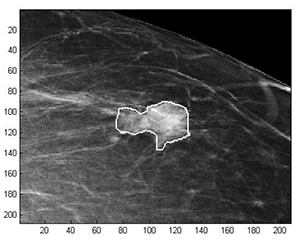Latest News Archive
Please select Category, Year, and then Month to display items
02 November 2023
|
Story Kekeletso Makau
|
Photo SUPPLIED
 The UFS Heads of Mission Breakfast event attracted a distinguished delegation of foreign diplomatic missions.
The UFS Heads of Mission Breakfast event attracted a distinguished delegation of foreign diplomatic missions.
The second Heads of Diplomatic Mission breakfast was hosted by the University of the Free State (UFS) in collaboration with the Mapungubwe Institute for Strategic Reflection (MISTRA) in Pretoria, South Africa on 26 October 2023.
The event served as an opportunity to position the UFS as a preferred partner for international collaboration in higher education, research, and innovation – following the success of the inaugural event in 2022. More than ten diplomatic missions were represented by distinguished foreign mission representatives who shared in the deliberations on this year’s theme, namely partnerships and collaborations.
The keynote address was delivered by the UFS Vice-Chancellor and Principal, Prof Francis Petersen, with contributing presentations from MISTRA researcher Laurence Caromba, UFS Professor of Pharmacology, Prof Motlalepula Matsabisa, and Senior Lecturer from the Centre for Gender and Africa Studies, Dr Grey Magaiza. A key goal of Prof Petersen’s presentation was to highlight the benefits of reciprocal collaboration and co-creation of knowledge with international partners, including industry partners. Contributing presentations posited the UFS as a partner of interest in research, innovation, and technology in the international arena and showcased the value of university and diplomatic partnerships in support of the UFS Internationalisation Strategy and Vision 130.
Caromba, a MISTRA researcher, reiterated the importance of collaboration between universities, research institutes, and the diplomatic community, further reaffirming the partnership value proposition entrenched in the UFS-MISTRA collaboration in co-hosting this year’s event. MISTRA, a renowned influential think tank, served as an excellent partner for the event.
The UFS currently boasts more than 100 vibrant international partnerships and is the incumbent coordinator of large EU-funded Erasmus+ projects among South African universities, with UFS researchers having co-authored more than 5 000 scientific publications with universities worldwide (2018-2022).
An engaging question-and-answer session concluded with insights and further action items for continued engagement post the event.
Mathematical methods used to detect and classify breast cancer masses
2016-08-10
 Examples of Acho’s breast mass
Examples of Acho’s breast mass
segmentation identification
Breast cancer is the leading cause of female mortality in developing countries. According to the World Health Organization (WHO), the low survival rates in developing countries are mainly due to the lack of early detection and adequate diagnosis programs.
Seeing the picture more clearly
Susan Acho from the University of the Free State’s Department of Medical Physics, breast cancer research focuses on using mathematical methods to delineate and classify breast masses. Advancements in medical research have led to remarkable progress in breast cancer detection, however, according to Acho, the methods of diagnosis currently available commercially, lack a detailed finesse in accurately identifying the boundaries of breast mass lesions.
Inspiration drawn from pioneer
Drawing inspiration from the Mammography Computer Aided Diagnosis Development and Implementation (CAADI) project, which was the brainchild Prof William Rae, Head of the department of Medical Physics, Acho’s MMedSc thesis titled ‘Segmentation and Quantitative Characterisation of Breast Masses Imaged using Digital Mammography’ investigates classical segmentation algorithms, texture features and classification of breast masses in mammography. It is a rare research topic in South Africa.
Characterisation of breast masses, involves delineating and analysing the breast mass region on a mammogram in order to determine its shape, margin and texture composition. Computer-aided diagnosis (CAD) program detects the outline of the mass lesion, and uses this information together with its texture features to determine the clinical traits of the mass. CAD programs mark suspicious areas for second look or areas on a mammogram that the radiologist might have overlooked. It can act as an independent double reader of a mammogram in institutions where there is a shortage of trained mammogram readers.
Light at the end of the tunnel
Breast cancer is one of the most common malignancies among females in South Africa. “The challenge is being able to apply these mathematical methods in the medical field to help find solutions to specific medical problems, and that’s what I hope my research will do,” she says.
By using mathematics, physics and digital imaging to understand breast masses on mammograms, her research bridges the gap between these fields to provide algorithms which are applicable in medical image interpretation.